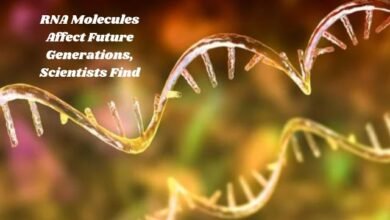Unraveling the Mysteries of Antimatter
Explore the fascinating world of antimatter, its properties, and its role in the universe in this intriguing journey of discovery.

Have you ever given the universe around you any thought? Protons, neutrons and electrons are the three fundamental building pieces that make up everything in the world, from the tiniest atom to the largest item. However, what if I told you that there is more to this situation, a hidden realm that coexists with the issues we are aware of? This is the realm of antimatter where forces & particles behave in ways that appear to defy our understanding of the rules.
Today, we’re going to explore the strange world of antimatter. We’ll see how scientists first discovered it in labs and how research at places like CERN is helping us learn more. As we dive deeper, we’ll look at the unique features of antimatter and how it connects to the bigger picture of science and the universe.
Mystery of Antimatter
Imagine looking up at the night sky, amazed by the stars and galaxies. But something seems to be missing — there’s no sign of antimatter. While matter is everywhere in the universe, we don’t see antimatter galaxies, planets, or stars.
This strange absence has puzzled scientists for years, sparking a search to understand antimatter. At the center of this mystery is the “baryonic asymmetry of the universe,” a question that doesn’t have an easy answer. Why does the universe have more matter than antimatter, and what does this strange imbalance mean for the laws of physics?
Beginning of Antimatter-Theory
In 1928, Paul Dirac suggested that antimatter exists. He said particles could have the same mass as regular matter but opposite charges. In 1932, Carl Anderson found the positron, proving Dirac’s idea.
Matter-Antimatter Imbalance
Current observations show that our universe is made up of:
- 5% ordinary matter
- 23% dark matter
- 72% dark energy
The missing antimatter in this mix is called matter-antimatter asymmetry. This is a big question in science: why does the universe have more matter than antimatter?
Exploring the Discovery of Antimatter
Our journey into antimatter starts with an important moment in science: the discovery of the positron. In 1932, physicist Carl D. Anderson found the first signs of antimatter while studying cosmic rays. His experiment showed the existence of positrons, which have the same mass as electrons but an opposite charge.
At the same time, British physicist Paul Dirac was predicting antimatter’s existence. His work in quantum field theory suggested that antiparticles were a natural part of physics, and soon his prediction was proven by experiments.
As scientists explored particle physics more, they realized that antimatter isn’t just a strange oddity; it’s a key part of the universe. Every particle of matter has an antimatter partner, and the universe is full of these hidden antimatter particles waiting to be discovered.
The Search to Understand Antimatter
The story of antimatter isn’t over yet. Physicists are still working to understand how matter and antimatter interact. From the forces that control their behavior to the mystery of gravity, antimatter has many strange properties that are hard to explain.
One big question is whether gravity affects matter and antimatter in different ways. While the Equivalence Principle says all objects fall at the same rate, experiments haven’t yet given a clear answer. At places like CERN, scientists are conducting important experiments to study how gravity works with antimatter and try to solve this mystery.
Why Are Molecules Radioactive?
Radioactive molecules are interesting for several reasons:
- Natural imbalance: They have a built-in asymmetry, making them great for research.
- Irregular charge: The radium nucleus has an uneven charge, which can highlight symmetry problems.
- Internal fields: Their uneven nature creates internal electromagnetic fields, making them ideal for study.
Challenges and Unknowns
The lack of antimatter in our universe raises important questions. Scientists think the Big Bang should have created equal amounts of matter and antimatter, but our universe is mostly made of regular matter. Why this imbalance exists is still one of the biggest mysteries in physics.
Radioactive Molecules in Space
Antimatter is rare on Earth, but it’s thought to exist in space. Cosmic rays, high-energy particles from distant sources, sometimes contain antimatter. Studying these rays helps scientists learn more about antimatter in the universe.
Uses of Antimatter
Antimatter is not just important for physics; scientists see it as a possible energy source. When matter and antimatter collide, they release huge amounts of energy. However, using this energy is difficult because of challenges like producing, storing, and containing antimatter.
The Future of Researching Antimatter
As we explore the universe with more advanced tools, the search to understand antimatter continues. Scientists are using everything from particle accelerators to space research to expand our knowledge.
The journey is just beginning. Every new discovery helps us understand the universe better. Whether antimatter will help us solve the mysteries of dark matter and dark energy or lead to new areas of physics, one thing is clear: the pursuit of knowledge has no limits.
- Renewable Energy Innovations: From Solar Paint to Ocean Waves
- Ancient Silver Amulet Found: Rewriting Early Christian History
- Did Venus Ever Have Oceans?
Conclusion
Antimatter remains an exciting area of scientific study, expanding our understanding of the universe. From its mysterious lack in the observable cosmos to its potential as an energy source, studying antimatter could lead to new discoveries and technological innovations. As scientists explore this mystery further, we may uncover secrets that change how we see the universe and lead to major advancements in science and technology.



